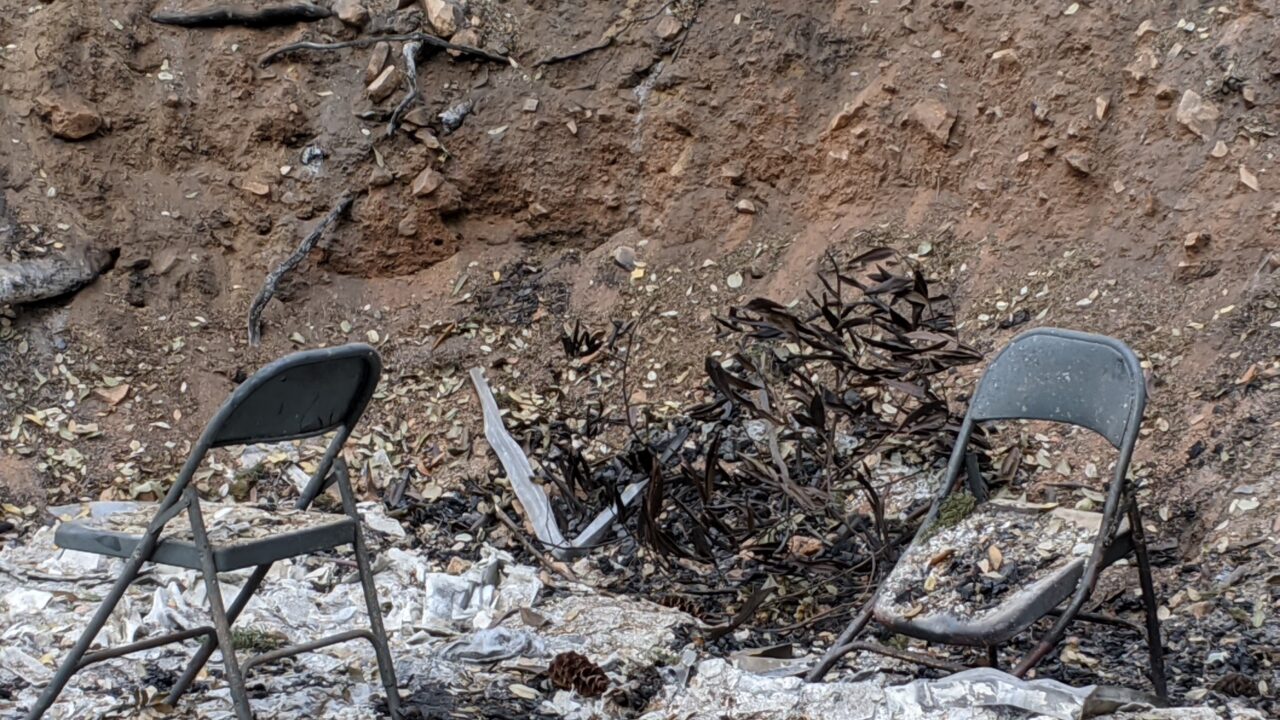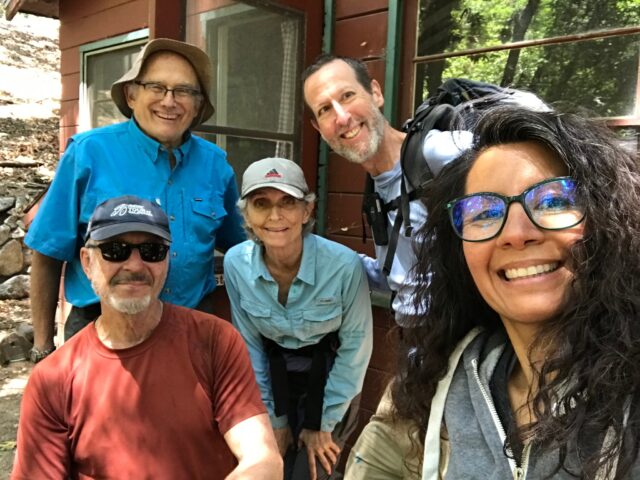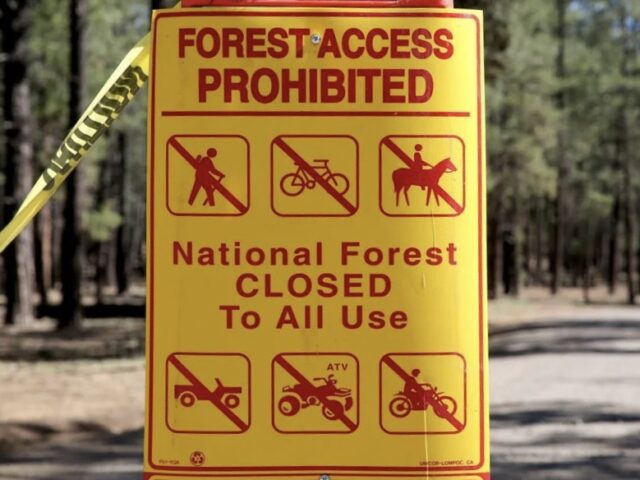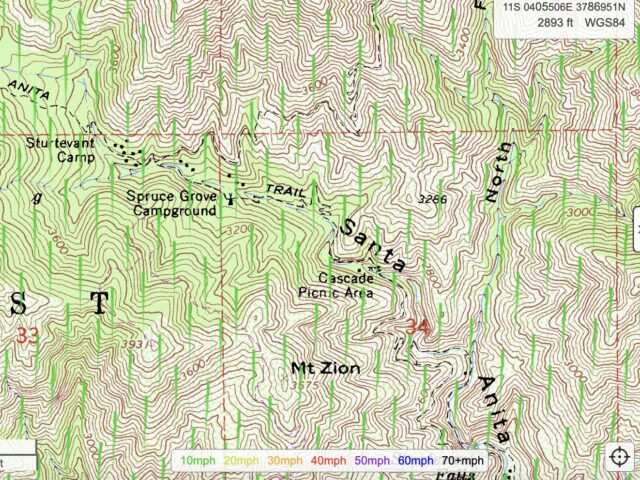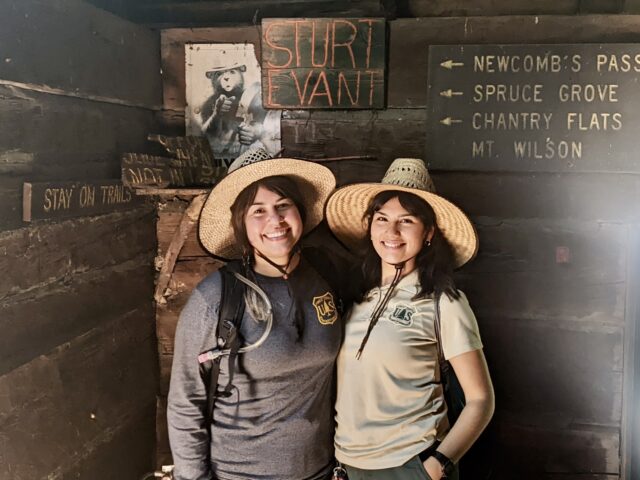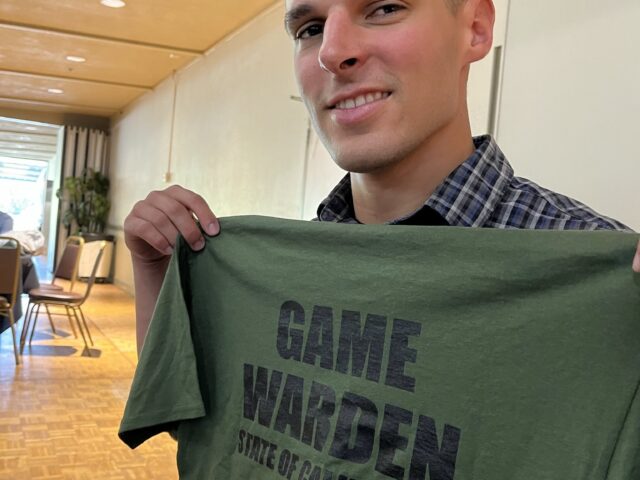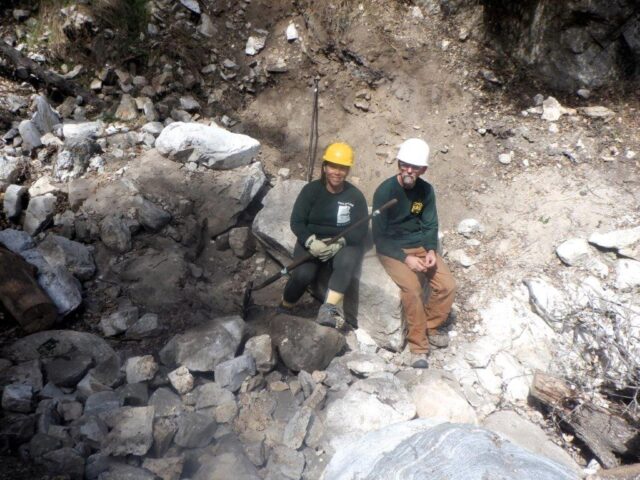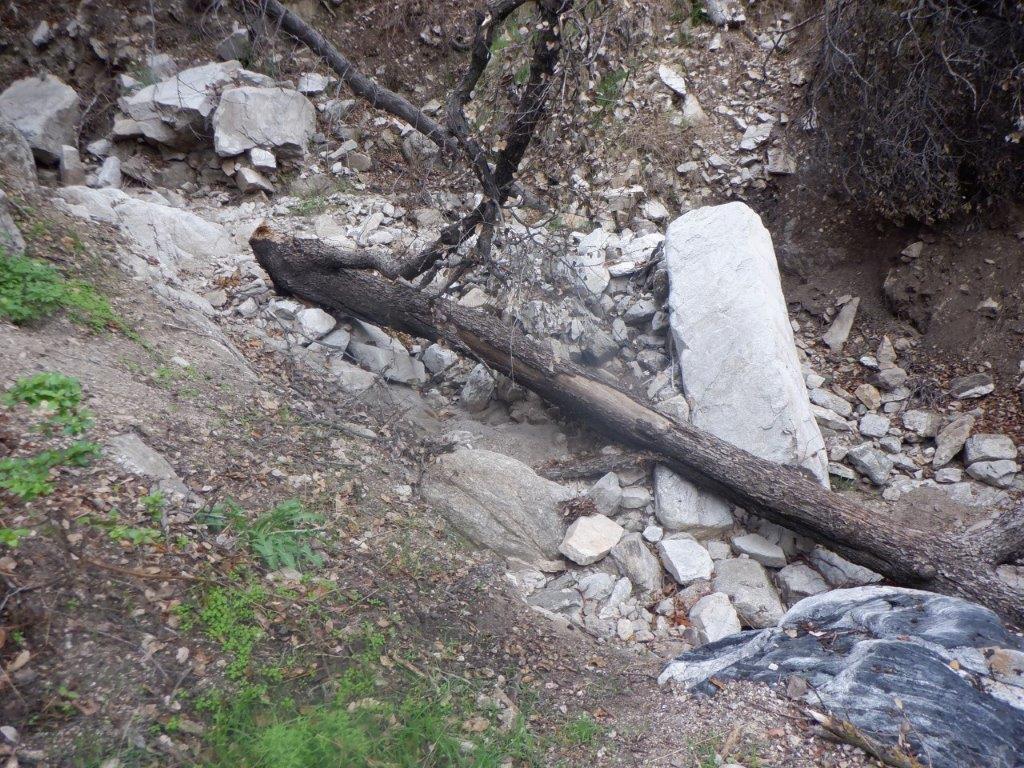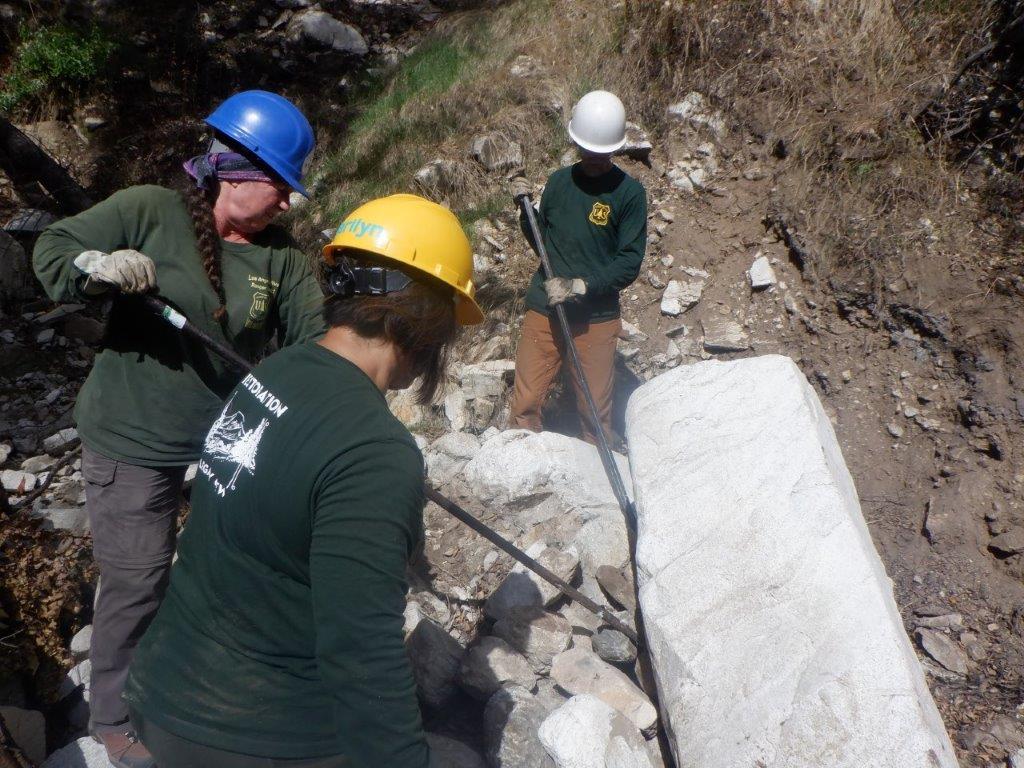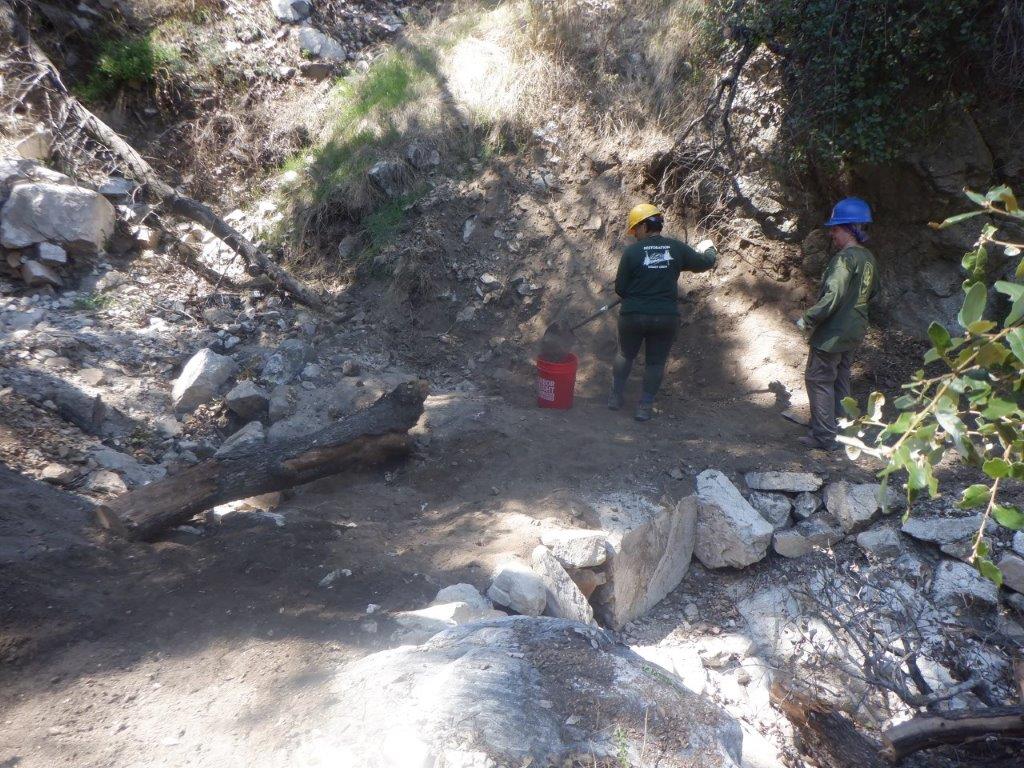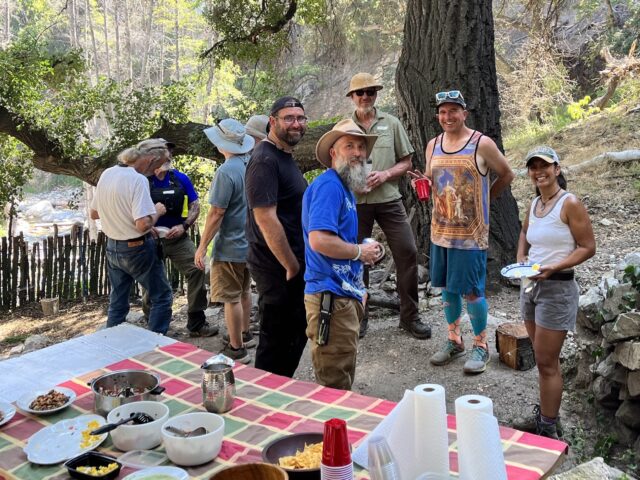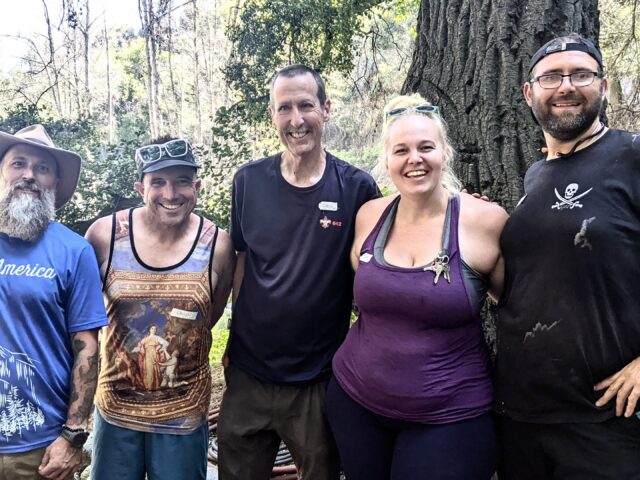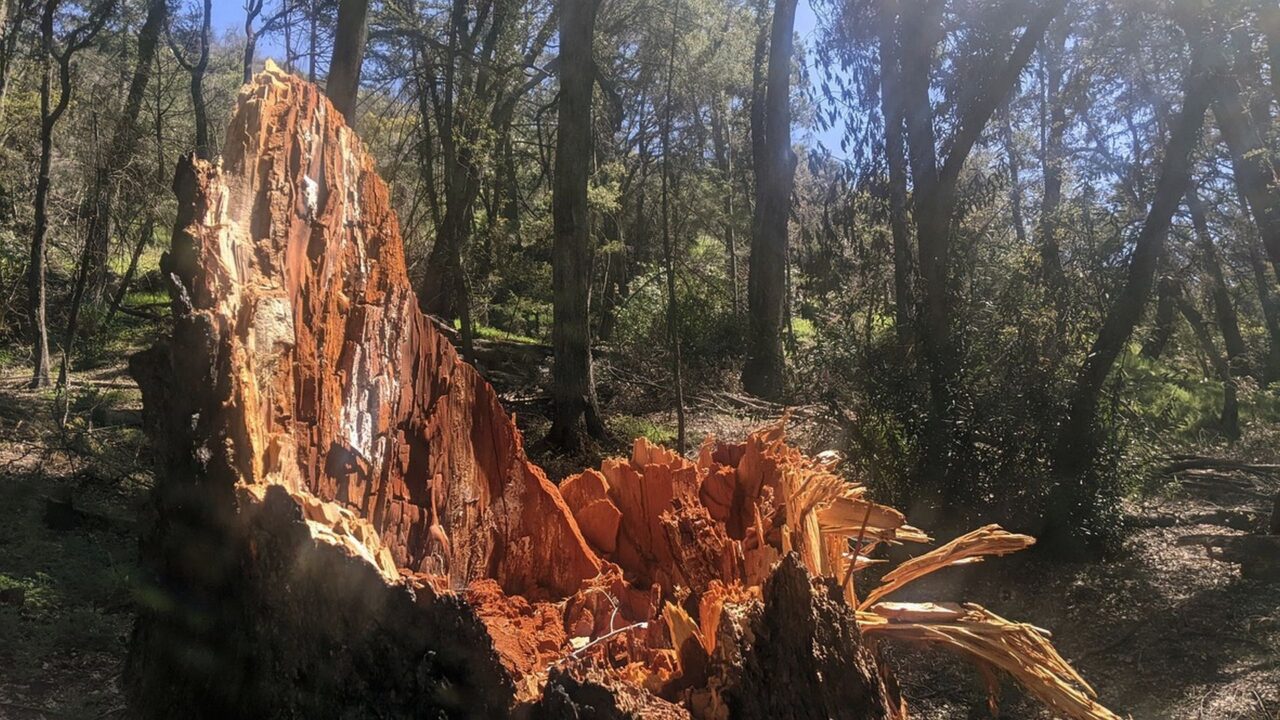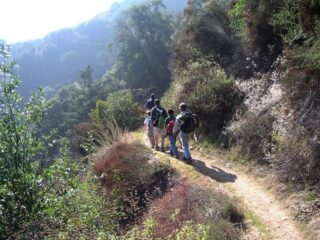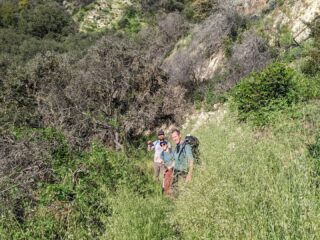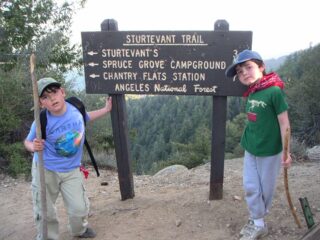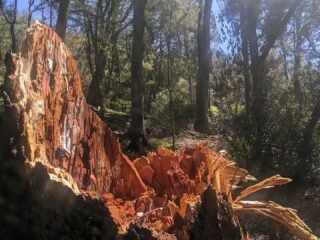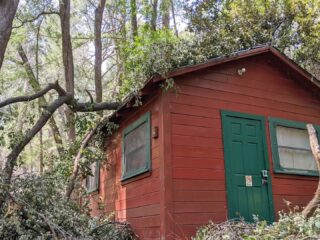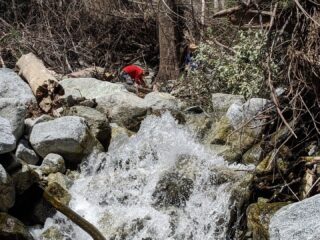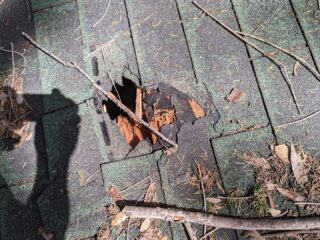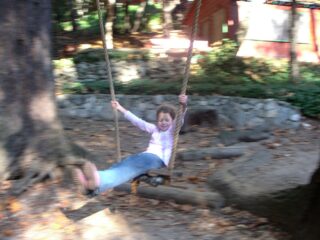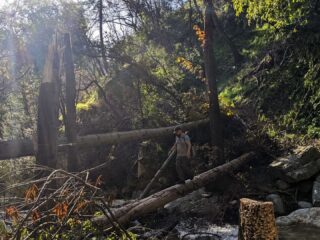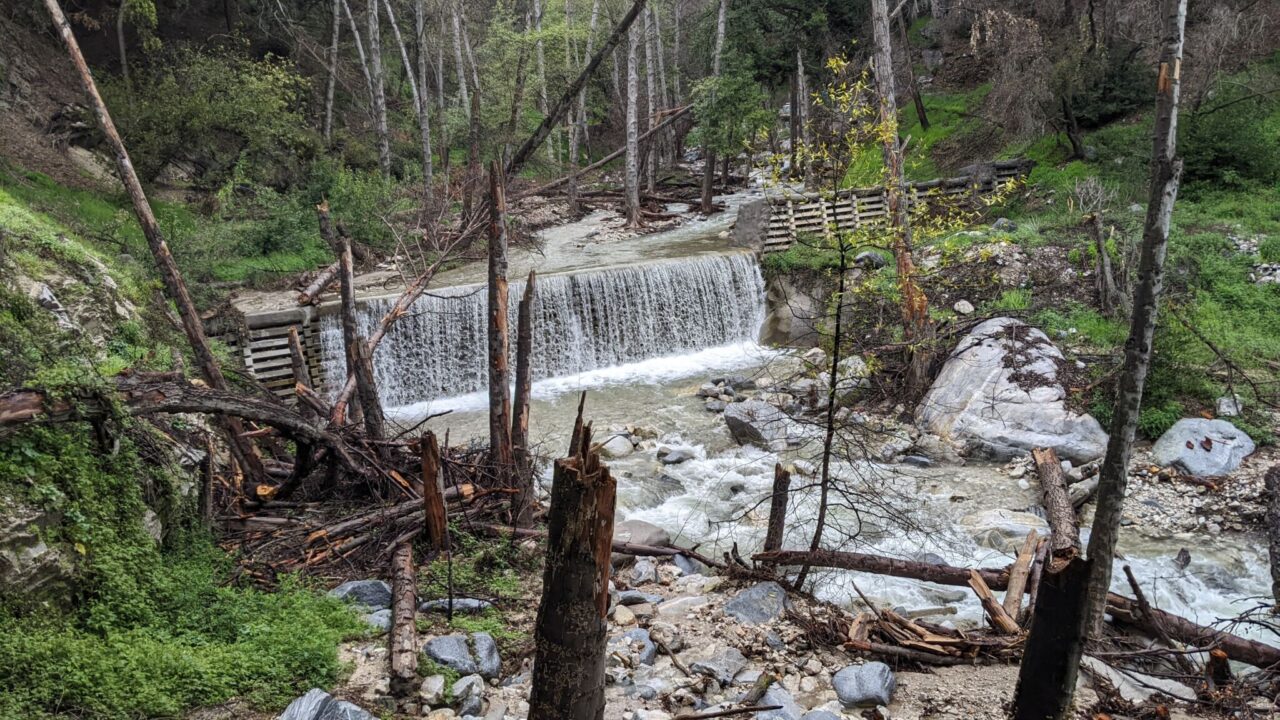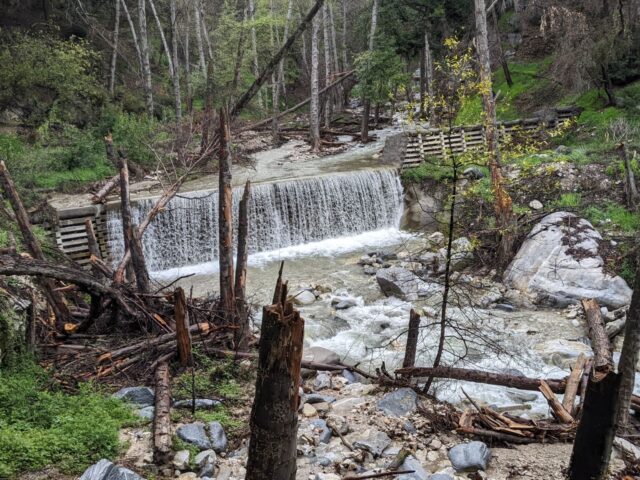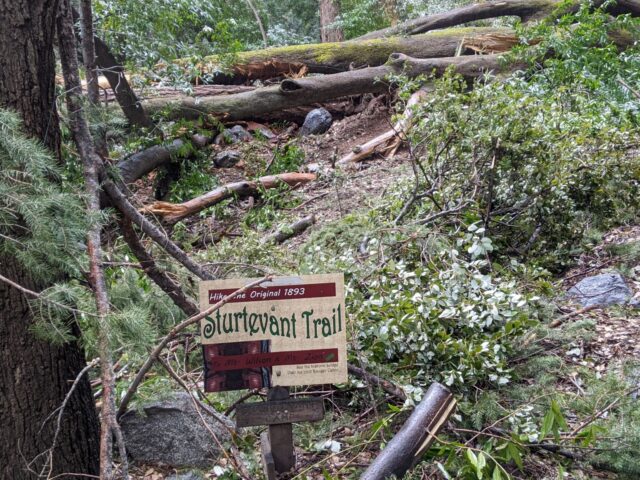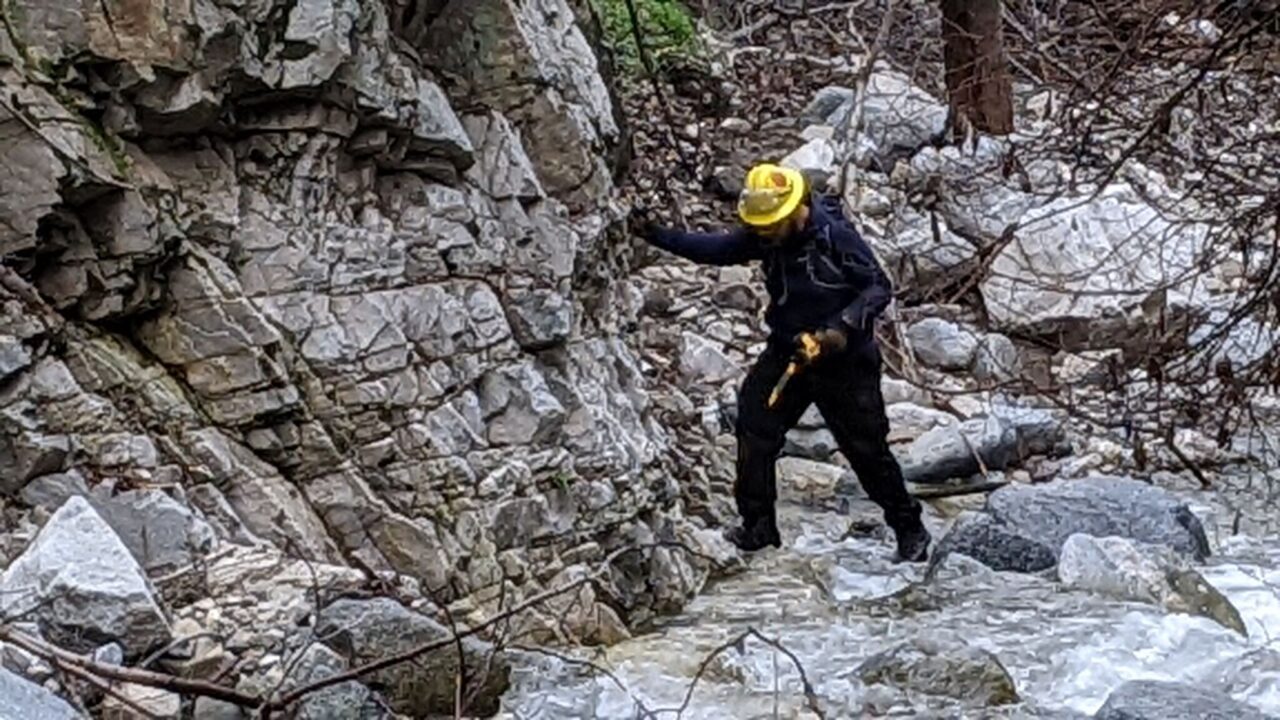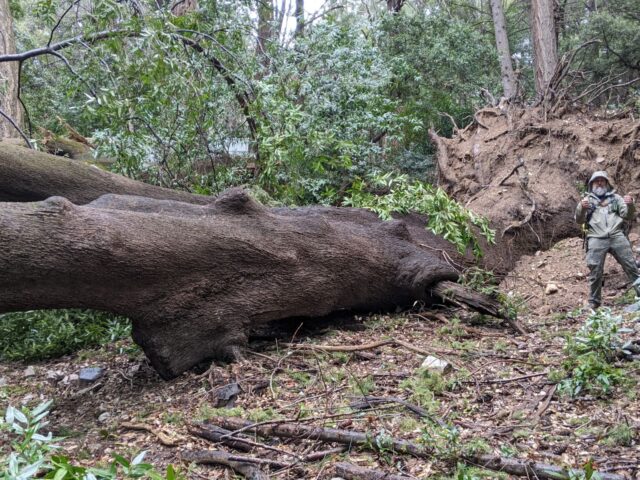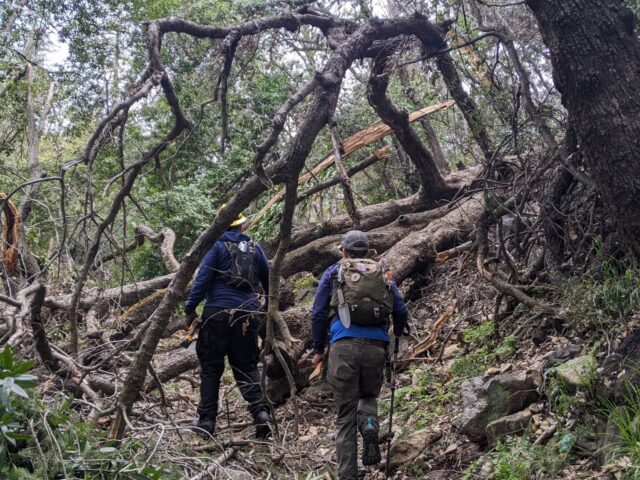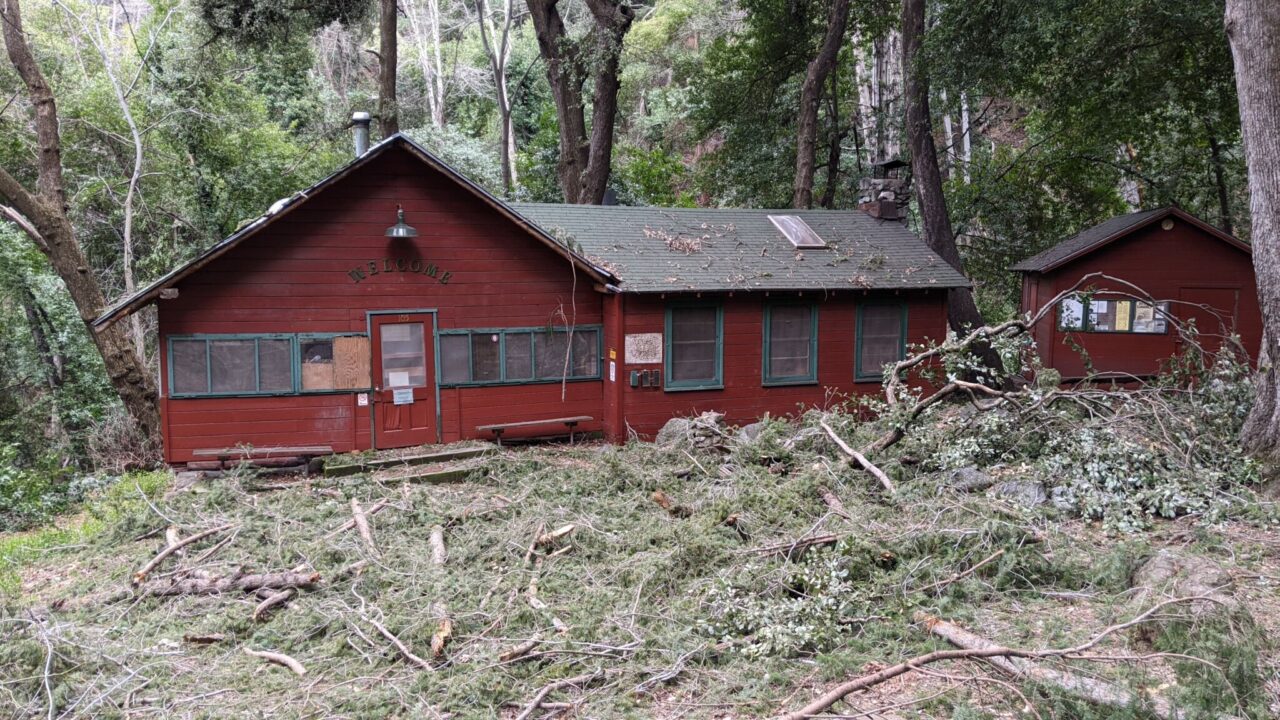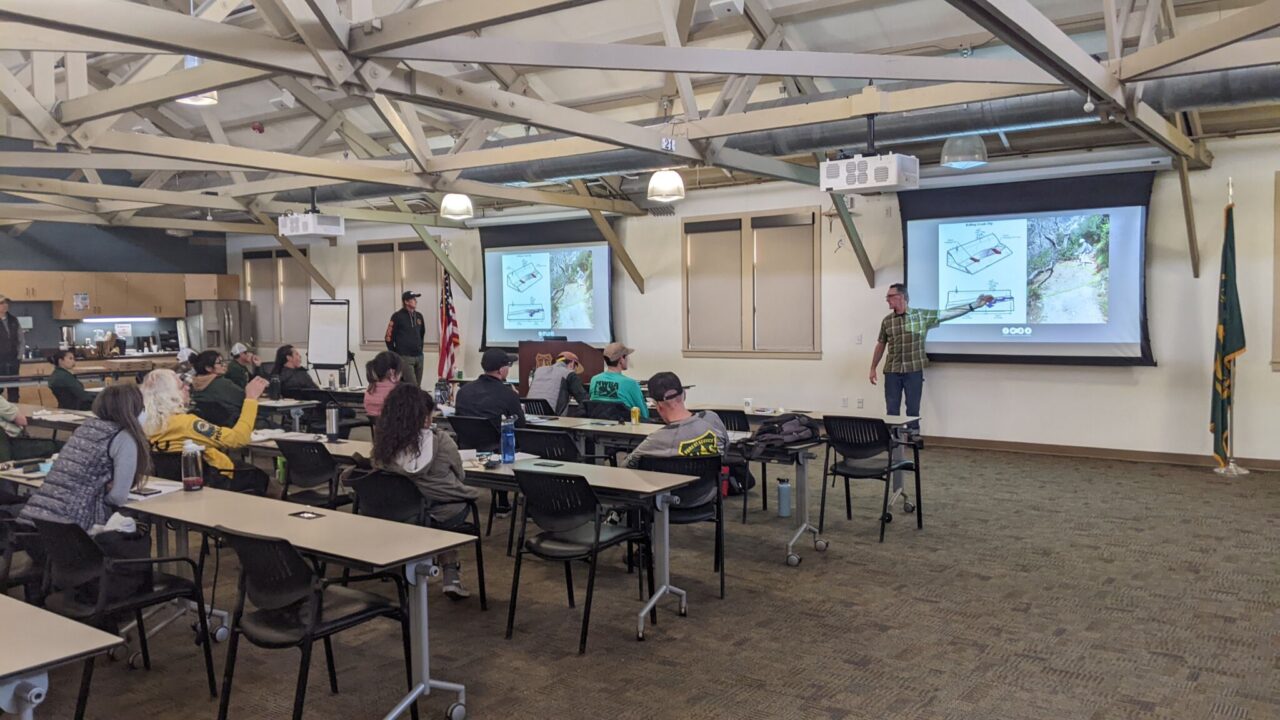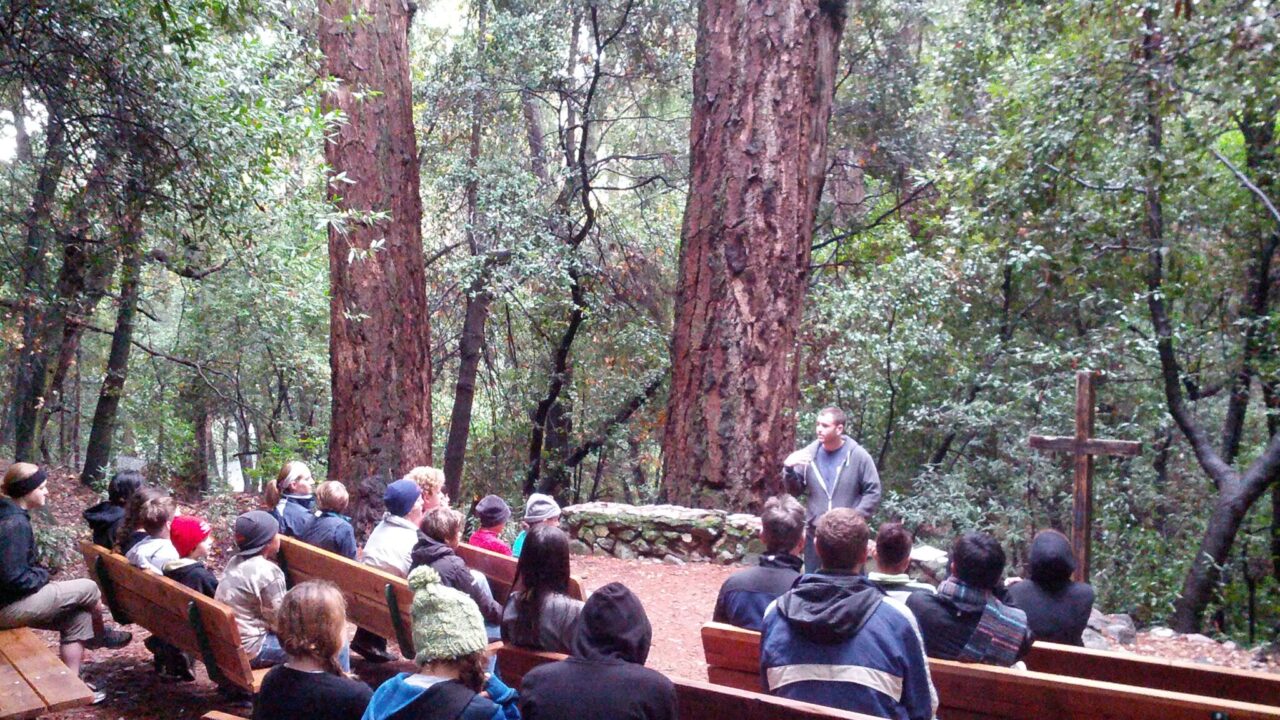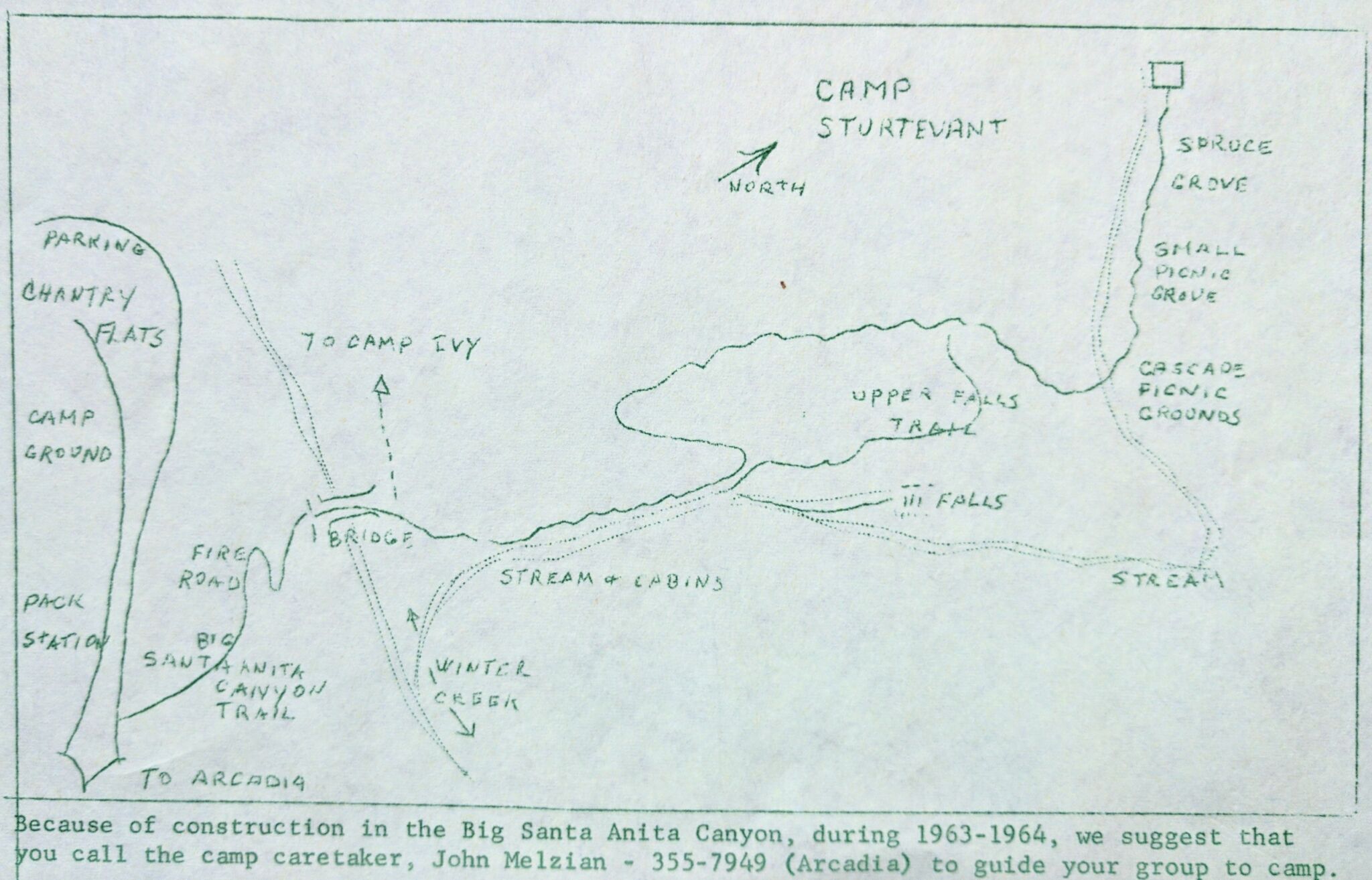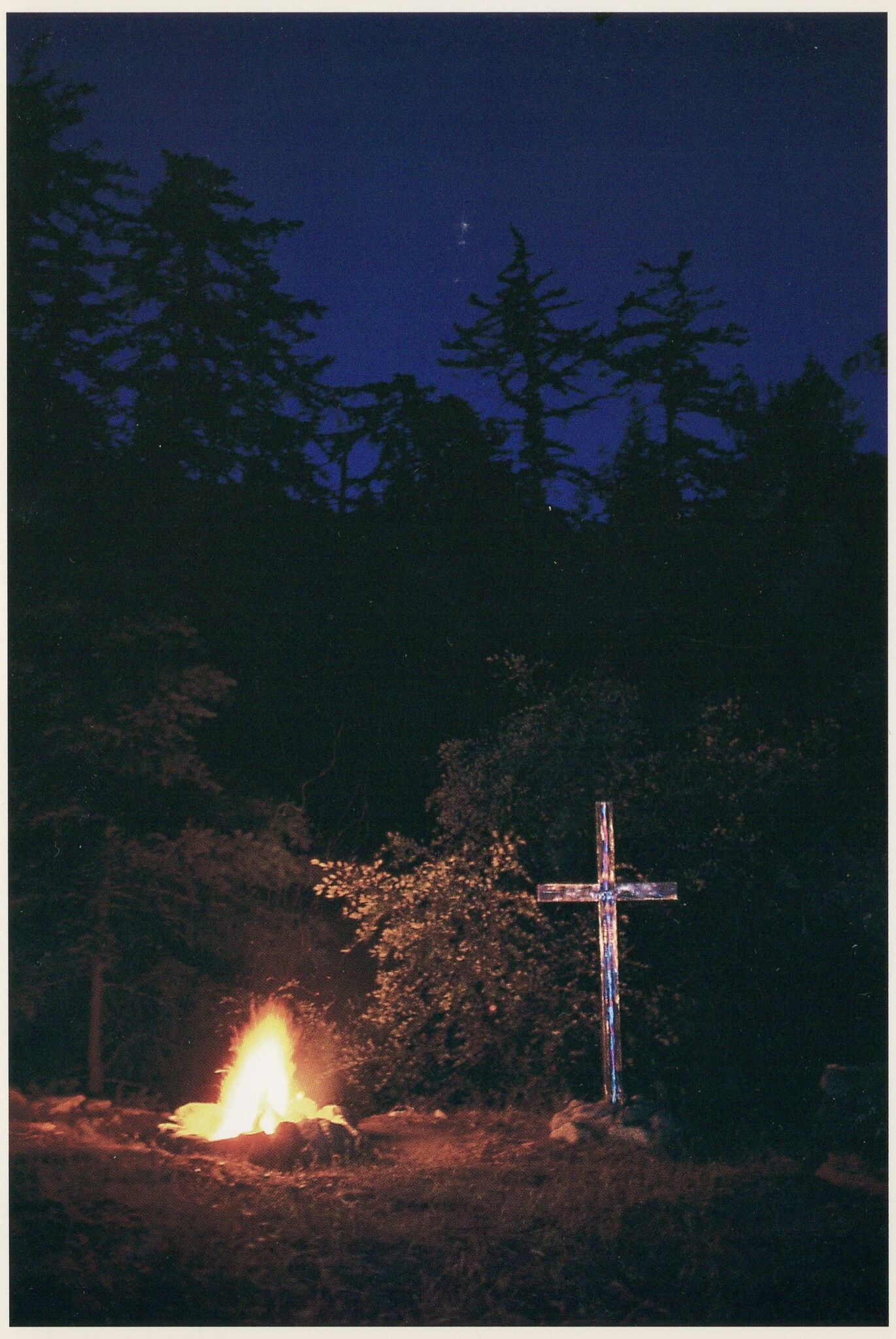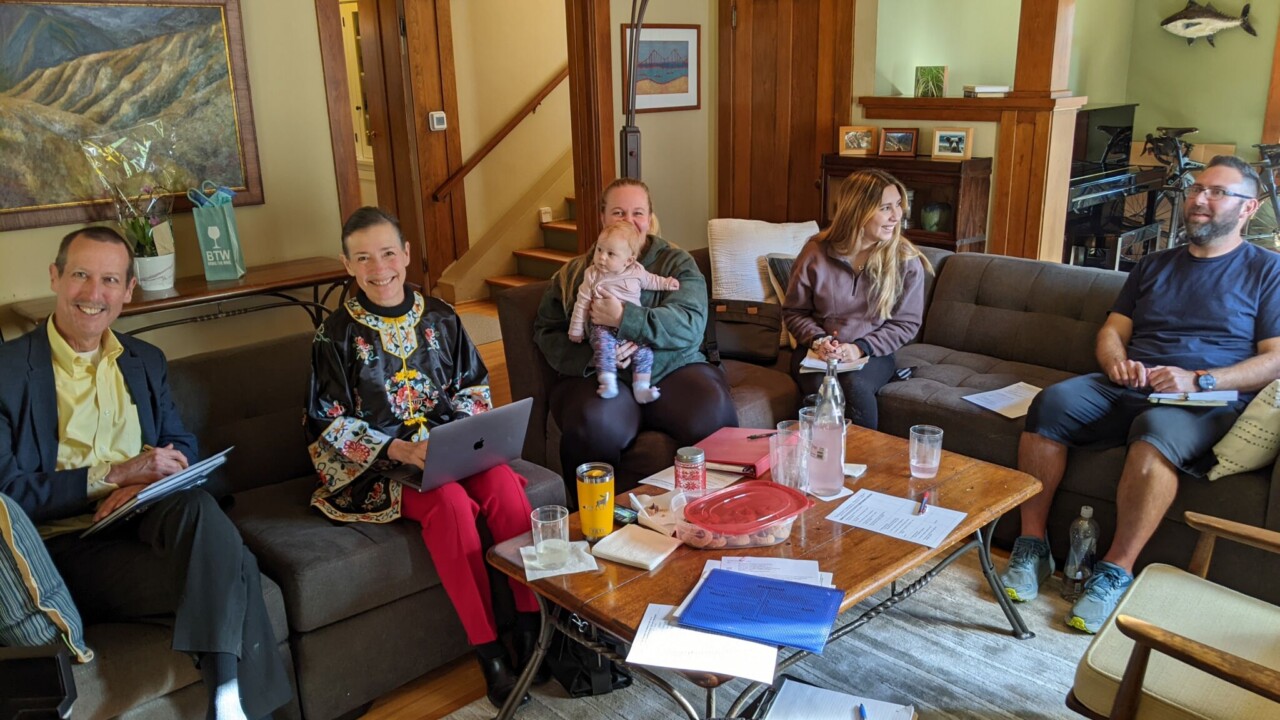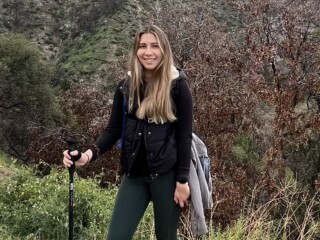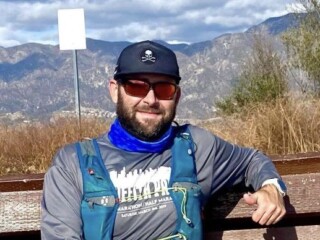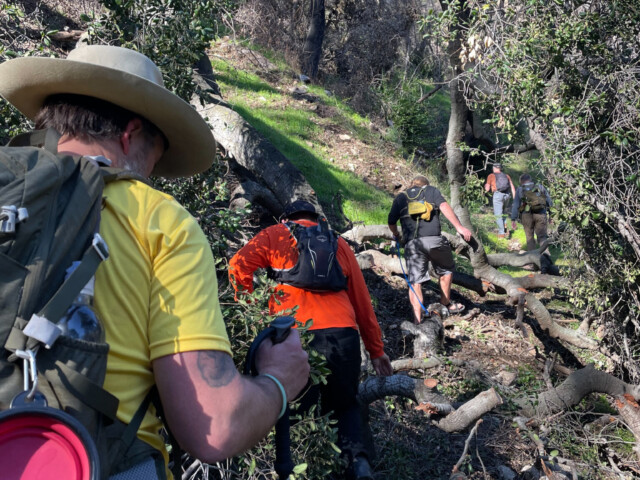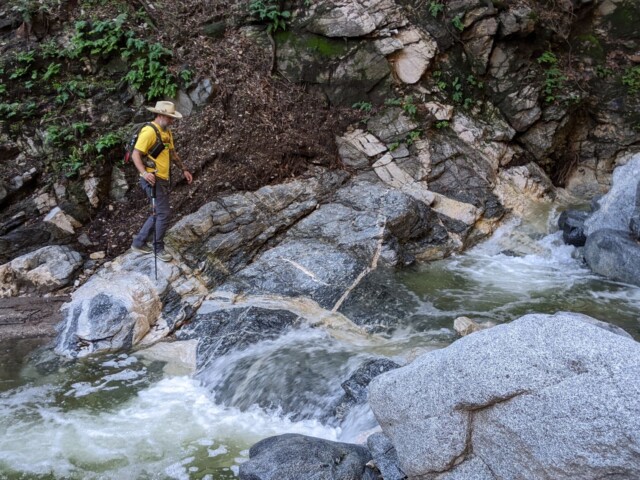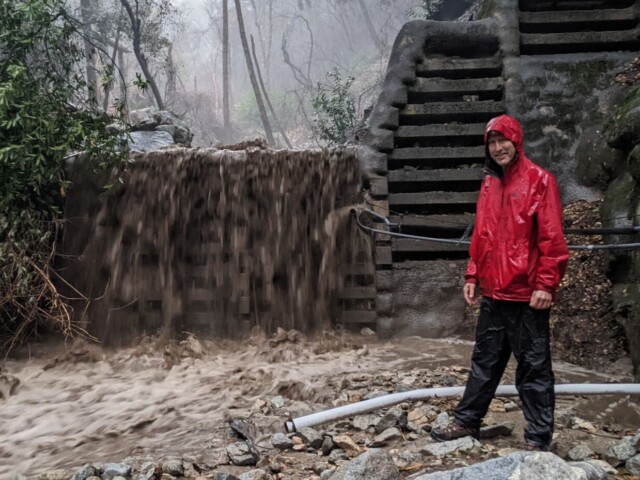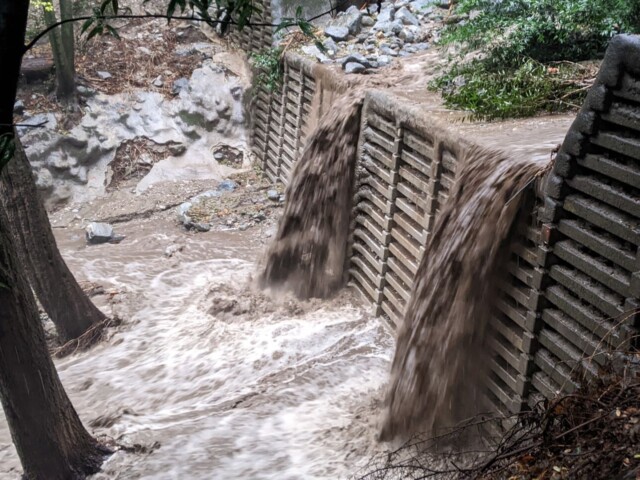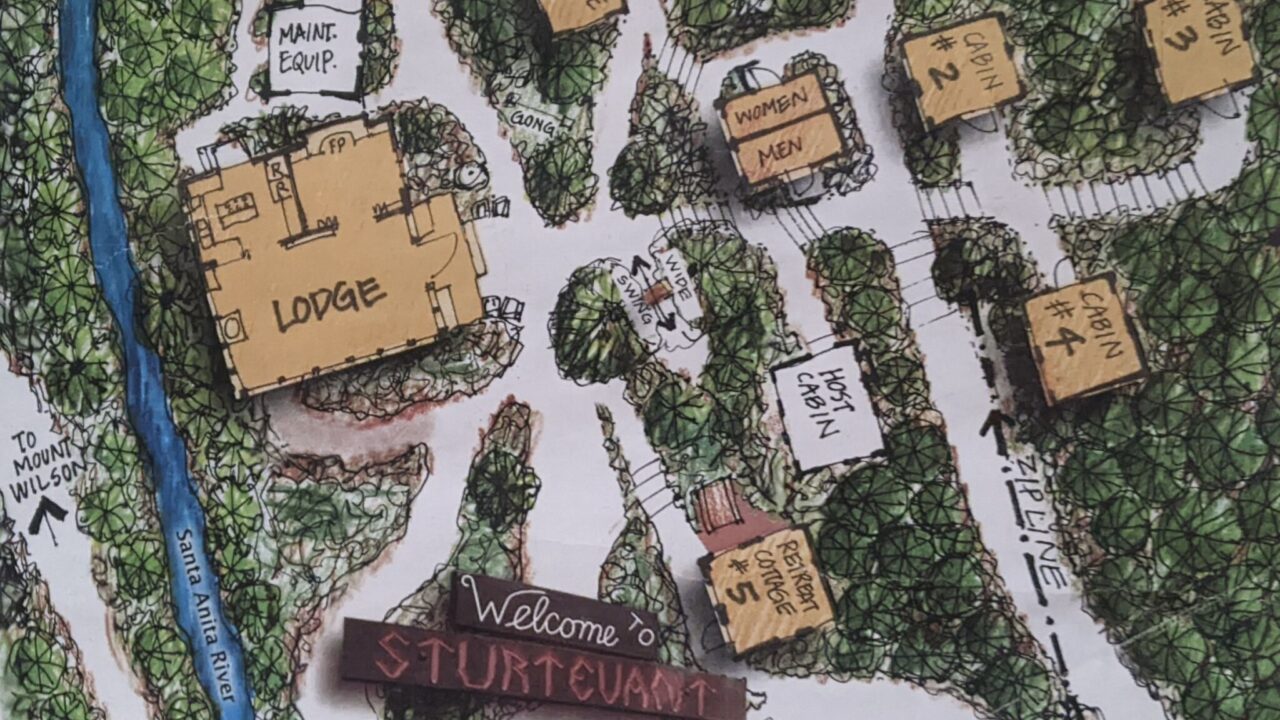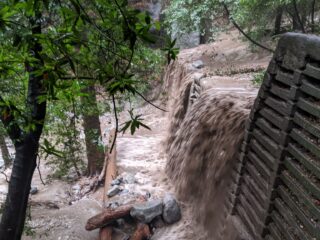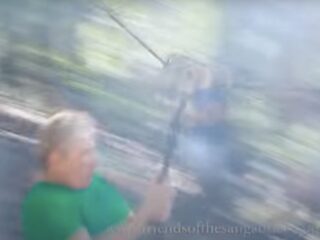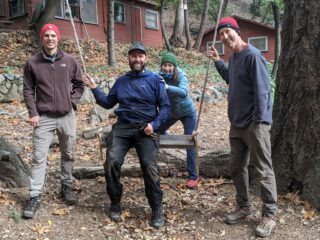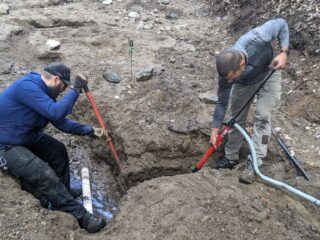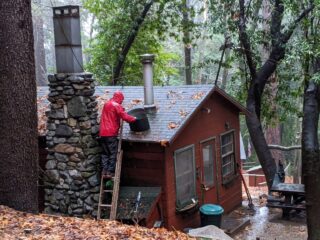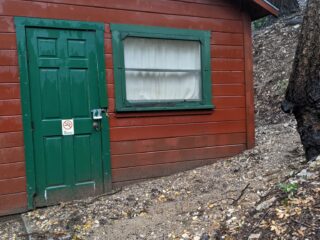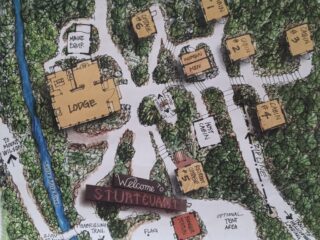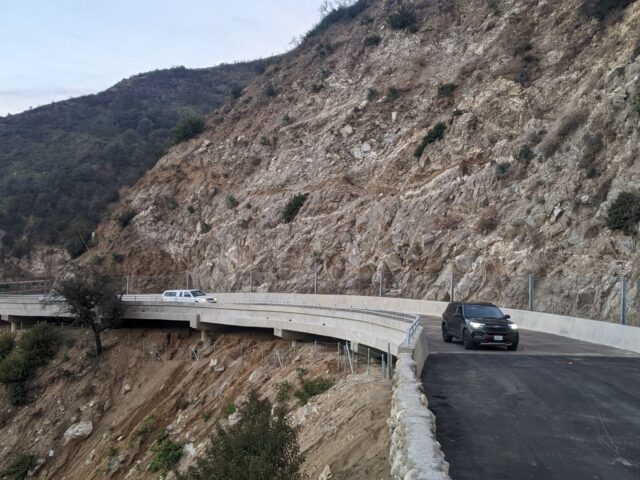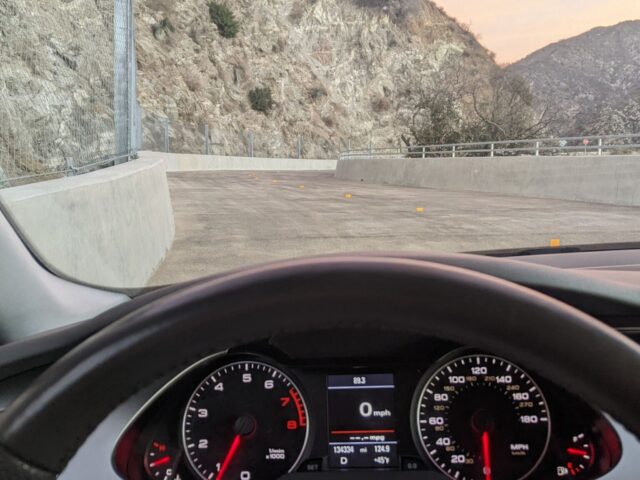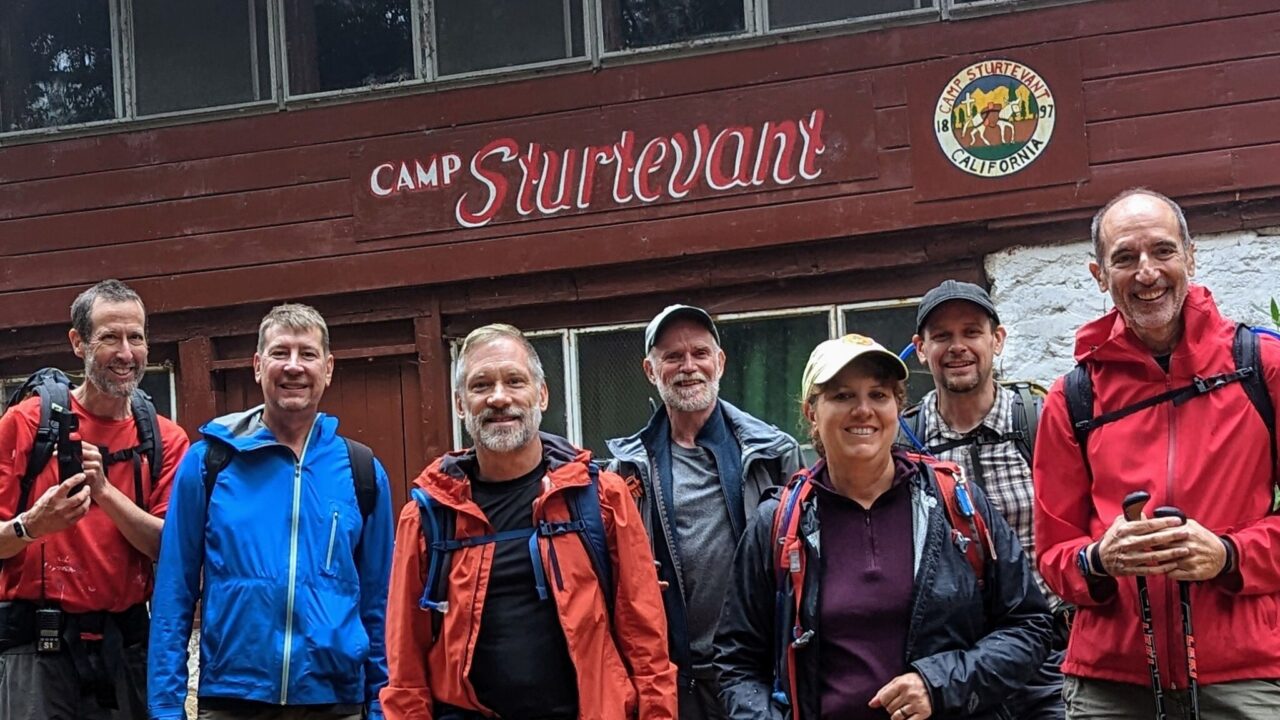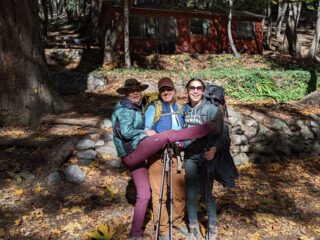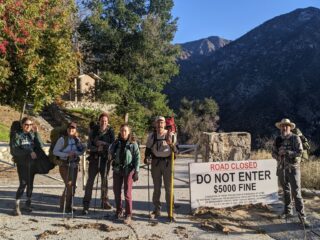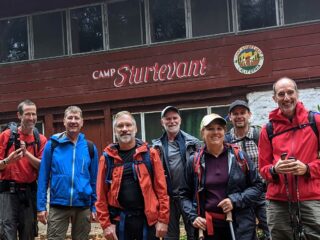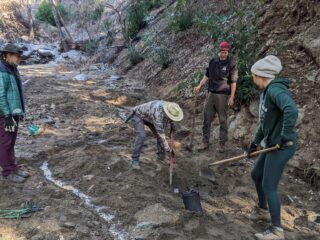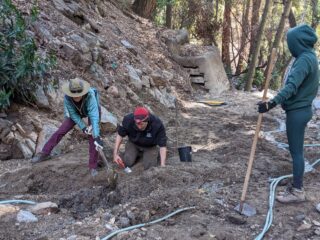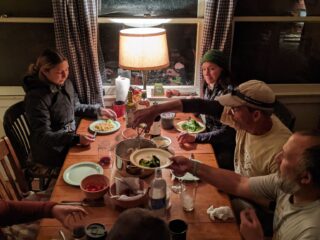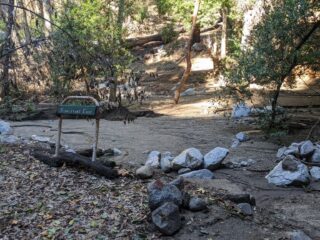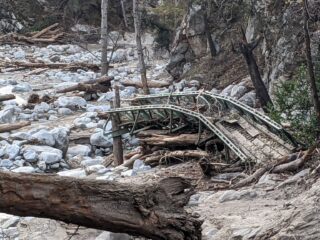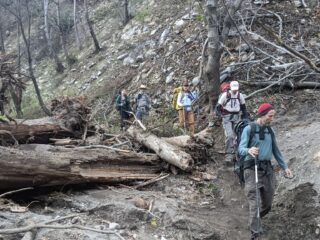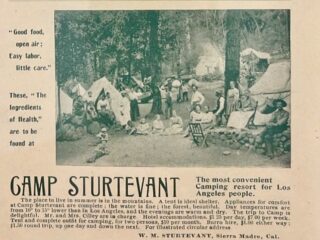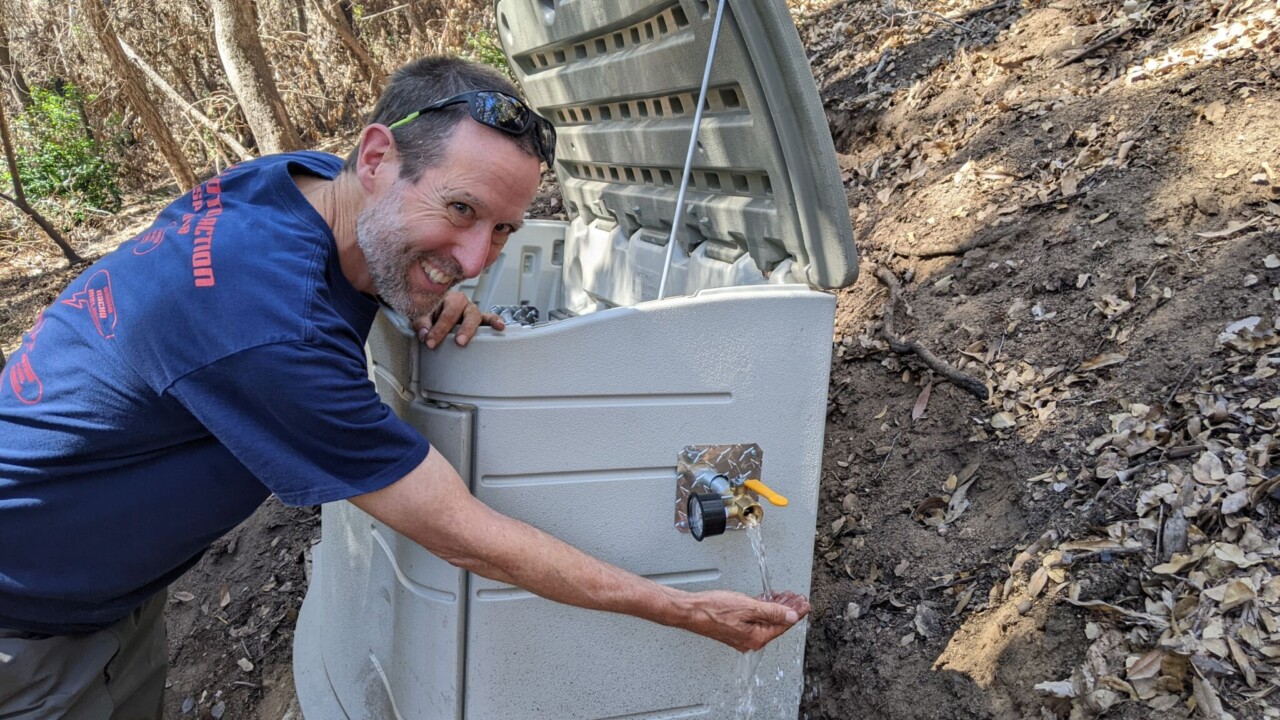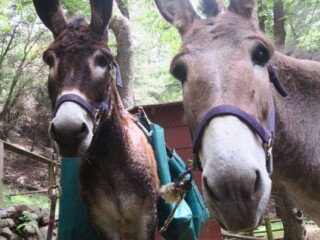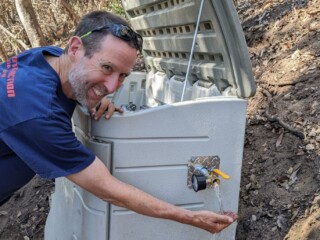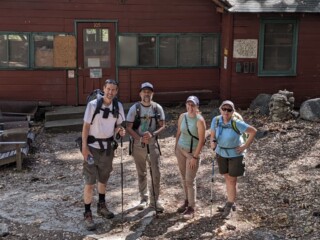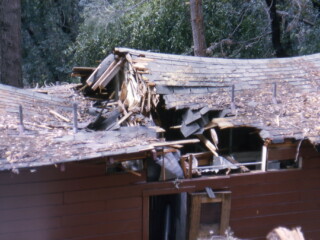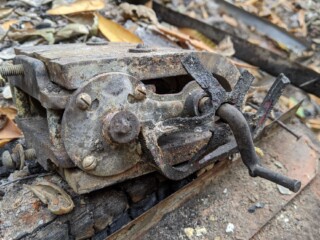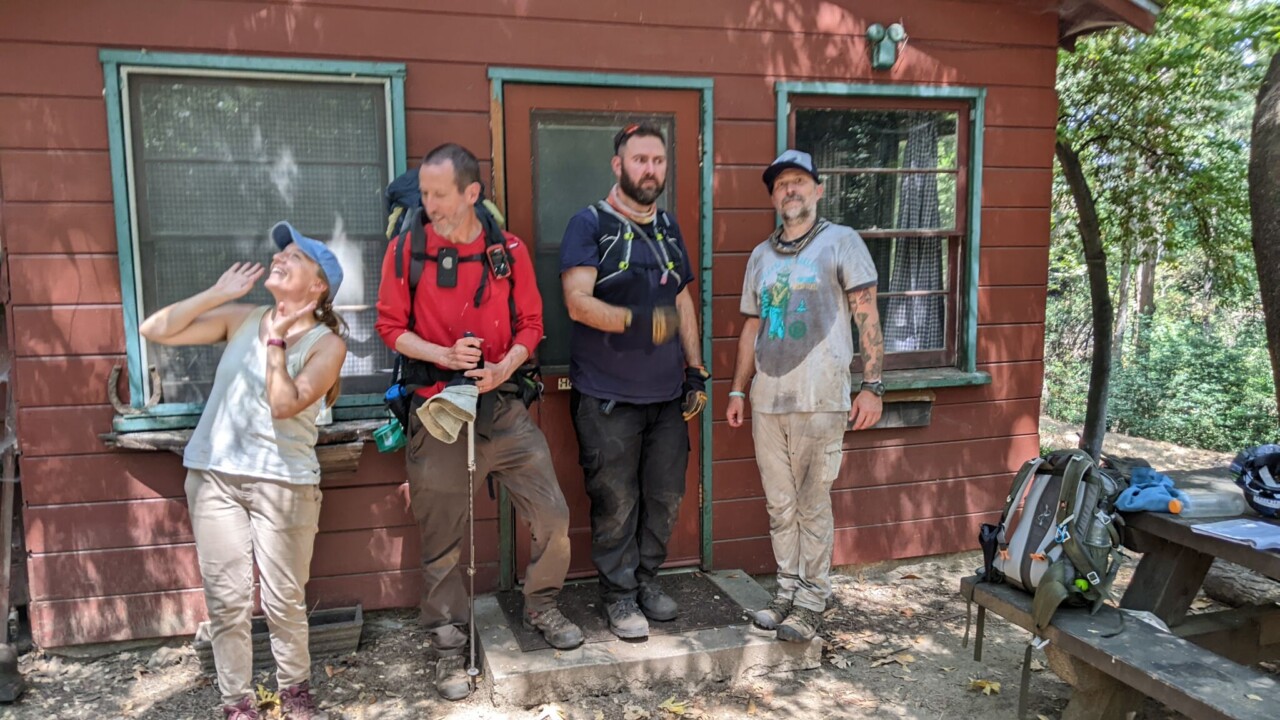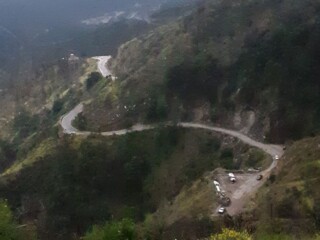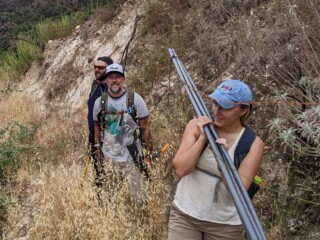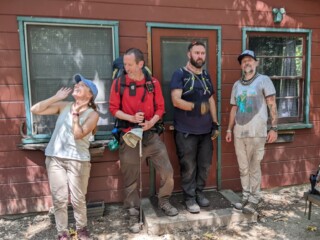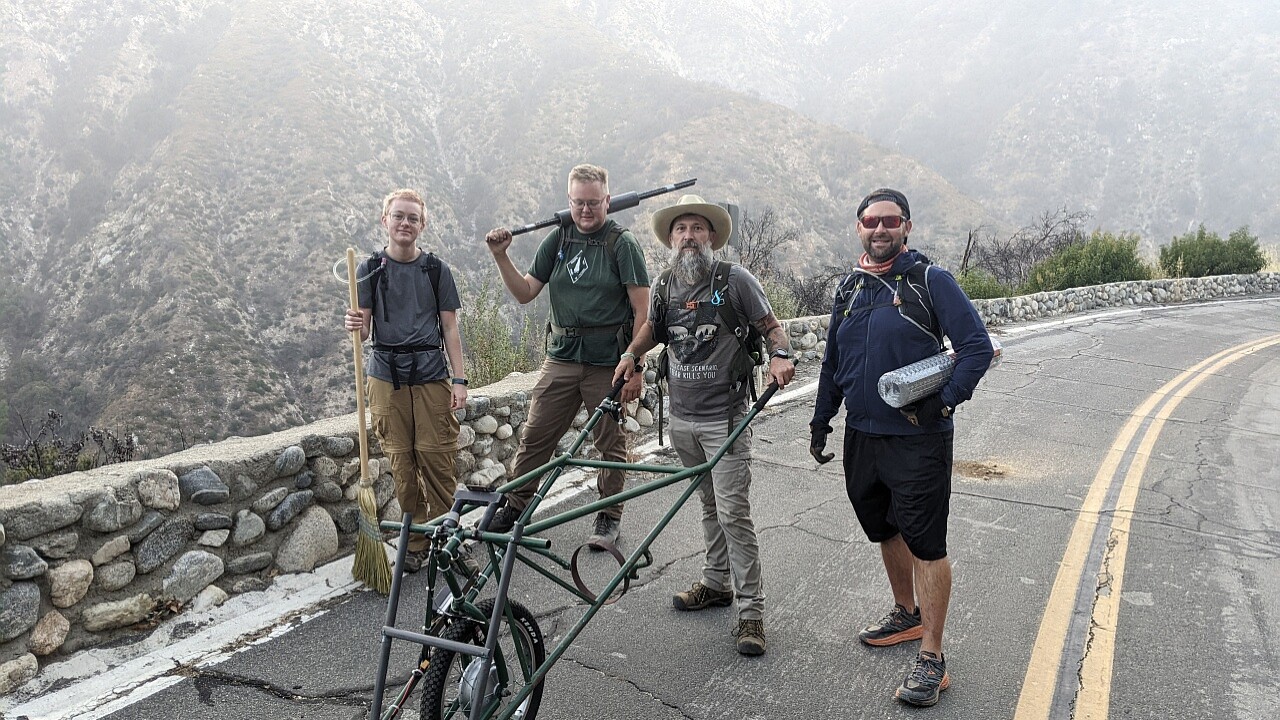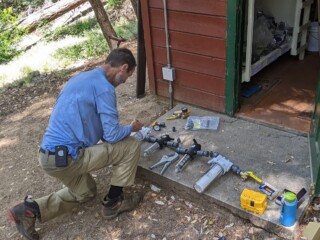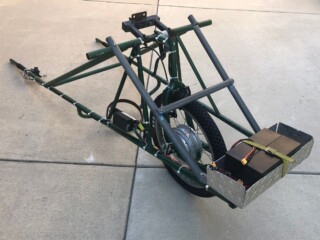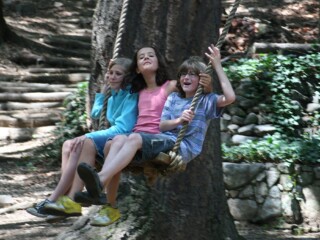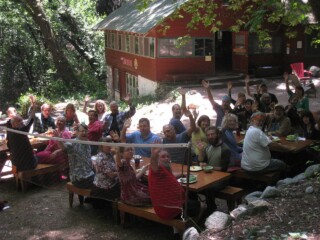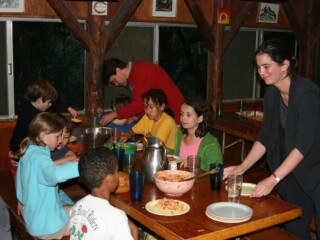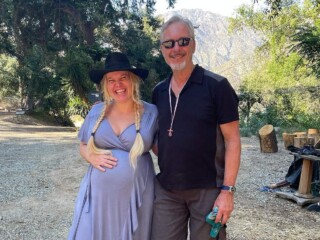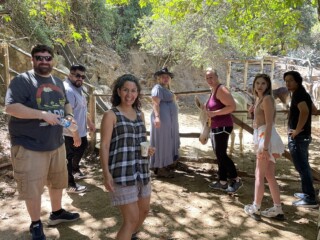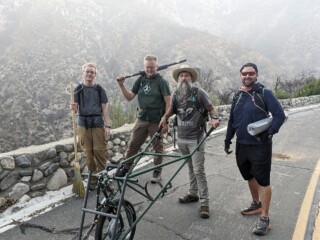Welcome New Board Member
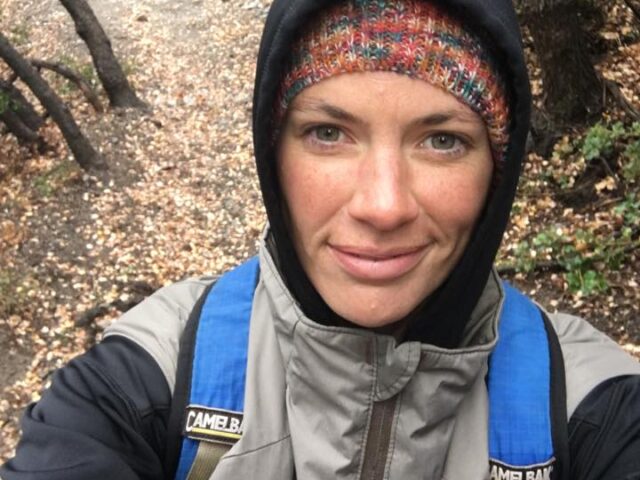
The Sturtevant Conservancy is pleased to welcome its newest member to the Board, Jennifer Berry. With her election, the Board now has its full complement of seven Directors; this will enable the Board to share the offices and work of the Conservancy more evenly and be more effective collectively. Jennifer comes from a solid background in environmental advocacy work and residential camping: she previously served as site Director for Sturtevant’s historic sister-camp in the San Gabriels, Colby Ranch. She currently works for the National Outdoor Leadership School. Watch for her profile to be added soon to the Who We Are page on the Camp’s website.
All the Leaves Are Down / And the Sky is Grey
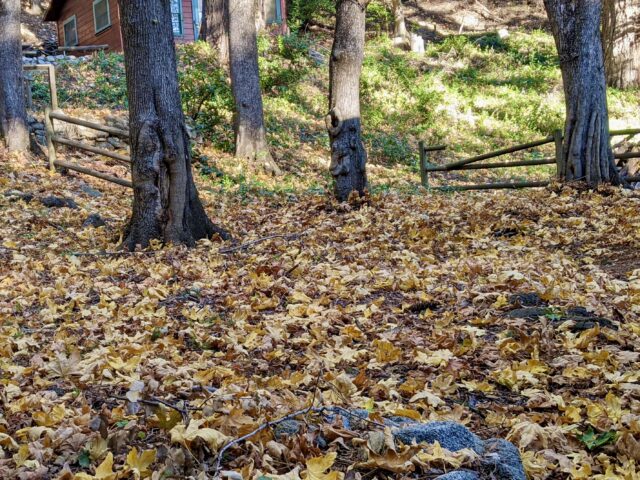
‘Tis the season – for raking! Along with all the trail-work getting done (see below), one task dominates this time every year: raking big yellow maple leaves. At approx. 3150ft elevation, Camp is in the eco-zone of the upper Big Santa Anita Canyon where most of the trees are coniferous or evergreen, like oaks and Bay trees. But the maples make up for it! Lovely as they are, it’s a fire hazard, so: we rake.
Added to the job are the oak trees’ acorns—big, fat rollie ones after this year’s abundant rainfall. They carpet the trails, making it hard to get traction going up, and too easy to slide/fall down, often right where you don’t want to lose your step! Second verse same as the first: we rake.
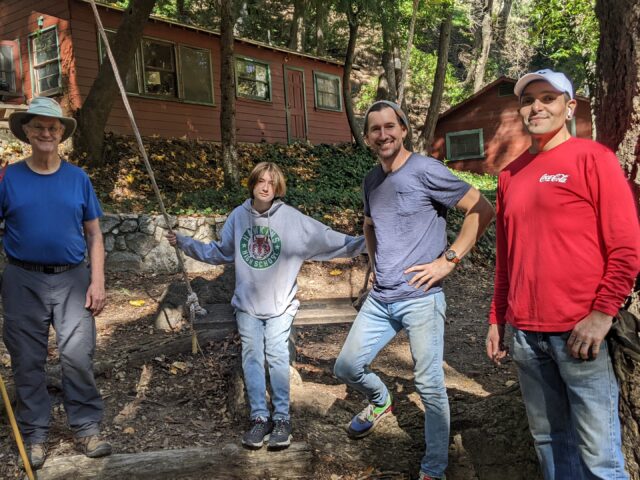
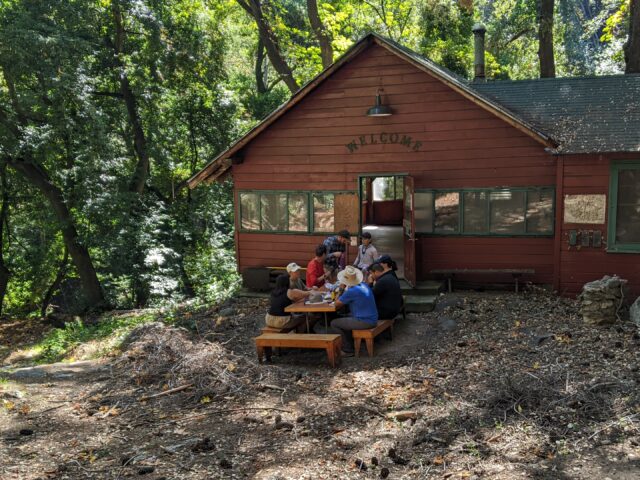
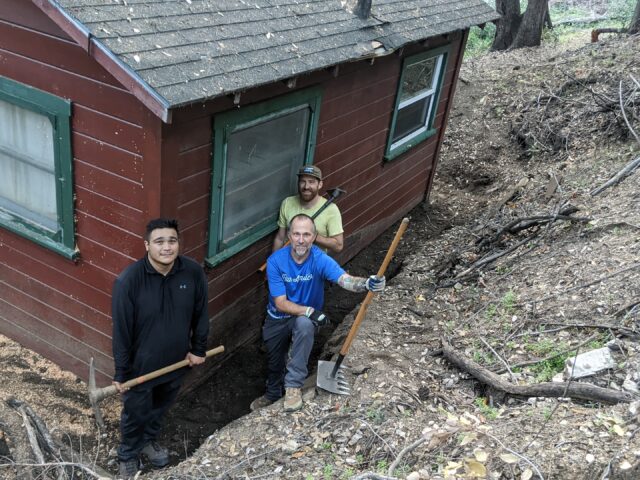
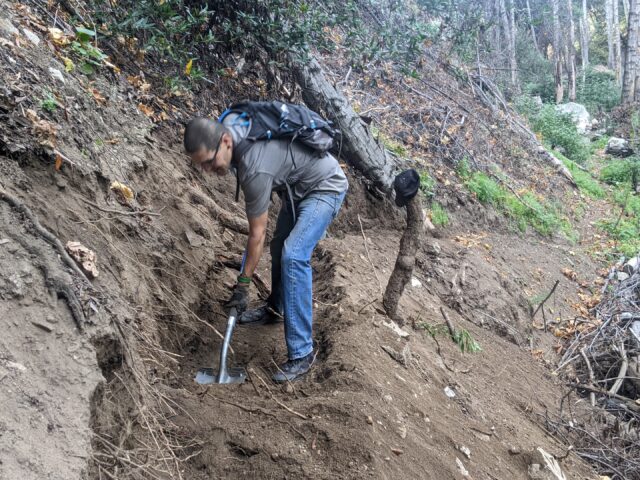
The EOY Season
The smell of roasting turkey is coming fast, followed quickly by the fresh smell of snowflakes – at least higher up. In other words, the End of the Year. We’ll be back here in early December to report on this year, look ahead to 2024 (re-opening?!)
And yes, of course, to invite your tax-deductible financial support before 2023 disappears like Thanksgiving’s gravy and mashed potatoes. Stay tuned!
Lost & Not So Lost Hikers
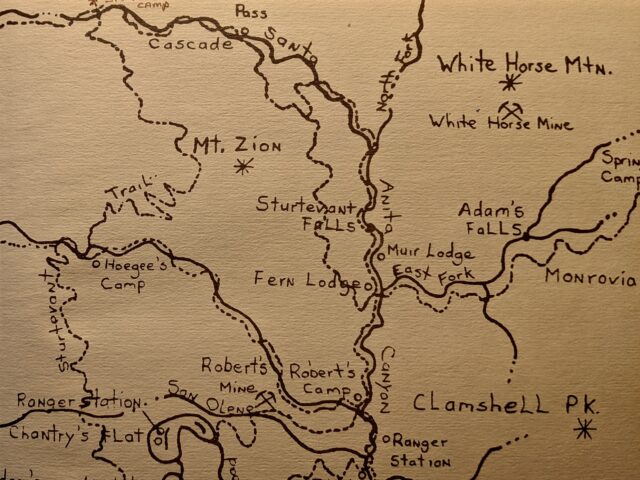
The Camp is very lucky to have hard-working volunteers helping to reclaim the Camp from the Bobcat fire. And sometimes they go way beyond the planned work. Several times over recent months, hikers have come down into Camp from Mt. Wilson—singles and couples who “somehow” didn’t know or ignored not only the trail-head closure signs, but also websites (USFS, ours), social media and trails-app info.
Typically, they’re pretty trashed. There’s a reason the Canyon remains closed: the trails are in nasty shape, often impassable. Yet somehow they pushed through, hoping not to have to turn around and go back UP. Or, they ‘had a plan’ for how they would shuttle back to the top.
Recently, two incidents in the same weekend occurred: a solo hiker one day and then a pair the next day found themselves down the Canyon near Camp and the sun disappearing. A Camp volunteer took pity on the first and hiked the person safely out in the dark AND drove them home (their car was stuck behind the now-closed gate on Wilson.) The next day, the Sierra Madre Search & Rescue Team located the duo and got them out in the dark, putting themselves at risk to do so.
Hikers and trail-runners spread the word: the Big Santa Anita Canyon is STILL CLOSED. Save yourself AND those who would have to bail you out at risk to themselves, and enjoy the mountains elsewhere—there’s plenty to go around!
Or, Don’t Go There Either

Rock On – Rock Off: Progress @ the Ladder Gap
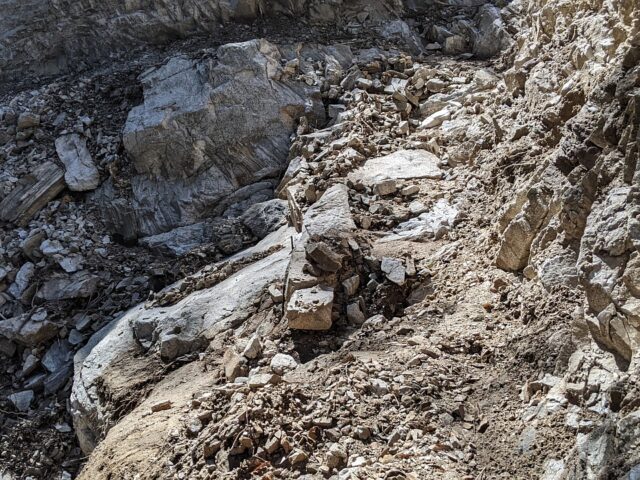
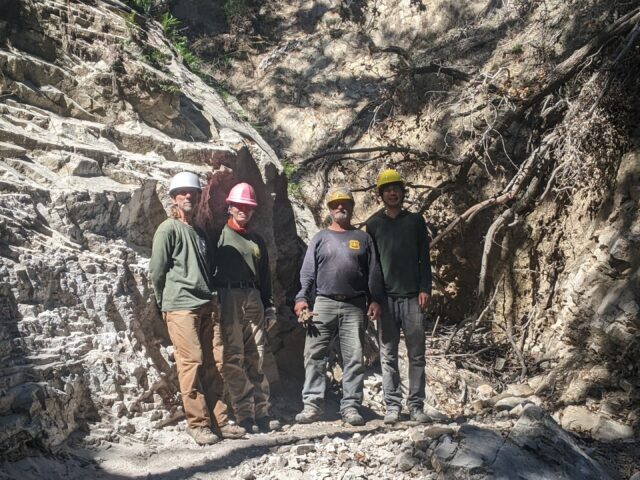
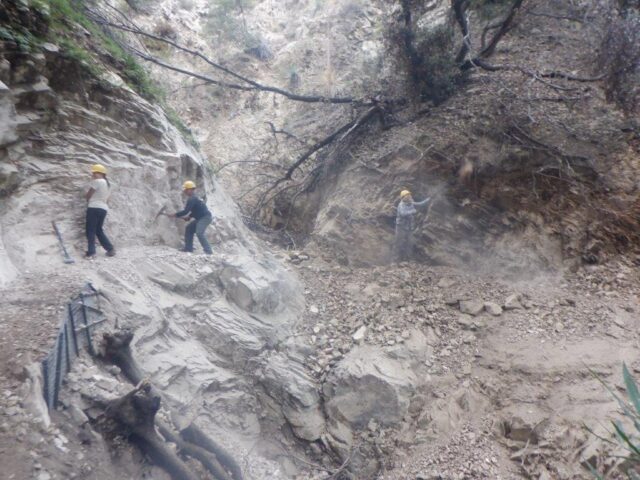
All hail the stubborn Restoration Legacy Crew! Brenda Beck and Dave Baumgartner have led this quiet group of talented volunteers for years in restoring trails throughout the San Gabriels. Now they’re literally hammering one spot several times a week, for multiple weeks in a row: it’s the infamous rock-bound Ladder Gap on the main trail up to Camp. Until the rock is chiseled back and the tread seriously firmed up, the Adams Pack train can’t get through, and much repair work at Camp remains stalled waiting for materials and supplies. The RLC folks aren’t fancy, but they’re sure tough and relentless—that should be their new name: the Relentless Legacy Crew! When the Pack Train finally gets through, and the Camp can be fully restored, it will be because of the RLC: thank you in advance very much! Check them out on-line, and plan on sampling their work once the Canyon opens.
Annual Meeting & Beyond
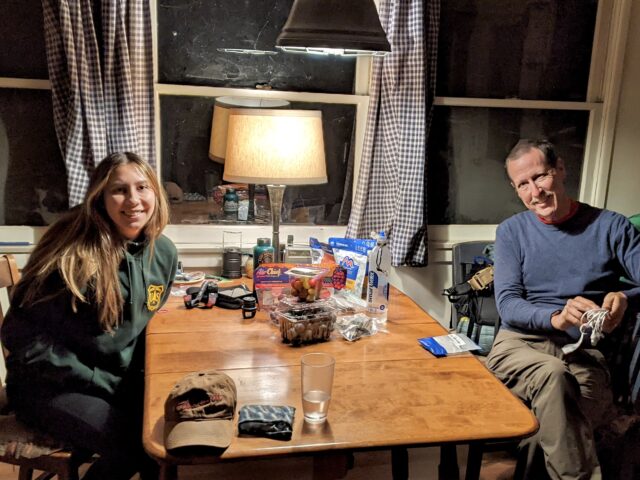
The Conservancy has set their Annual meeting for 2024 in January (California non-profits are required to hold at least one annual meeting.) The Board has met regularly during the year for administrative house-keeping that will set-up the annual meeting to focus on the future: what are the goals prior to re-opening the Camp? And what are the goals beyond that?
The vision beyond re-opening could stretch 20 years to 2043, which will be the 150th anniversary of Wilbur’s opening Sturtevant’s Camp to the public. It’s a ripe opportunity to imagine—and strategize for—a vital future. Come along for the hike by signing up for this newsletter here.
